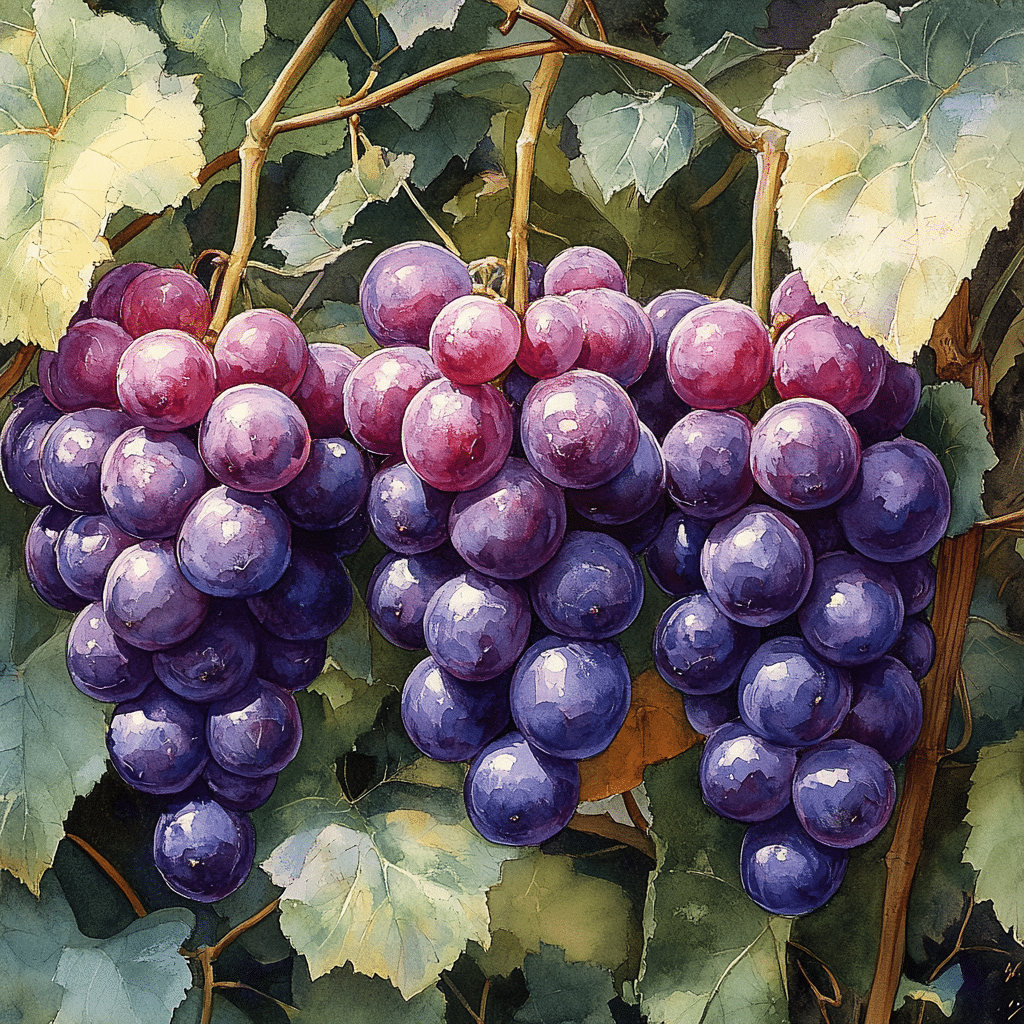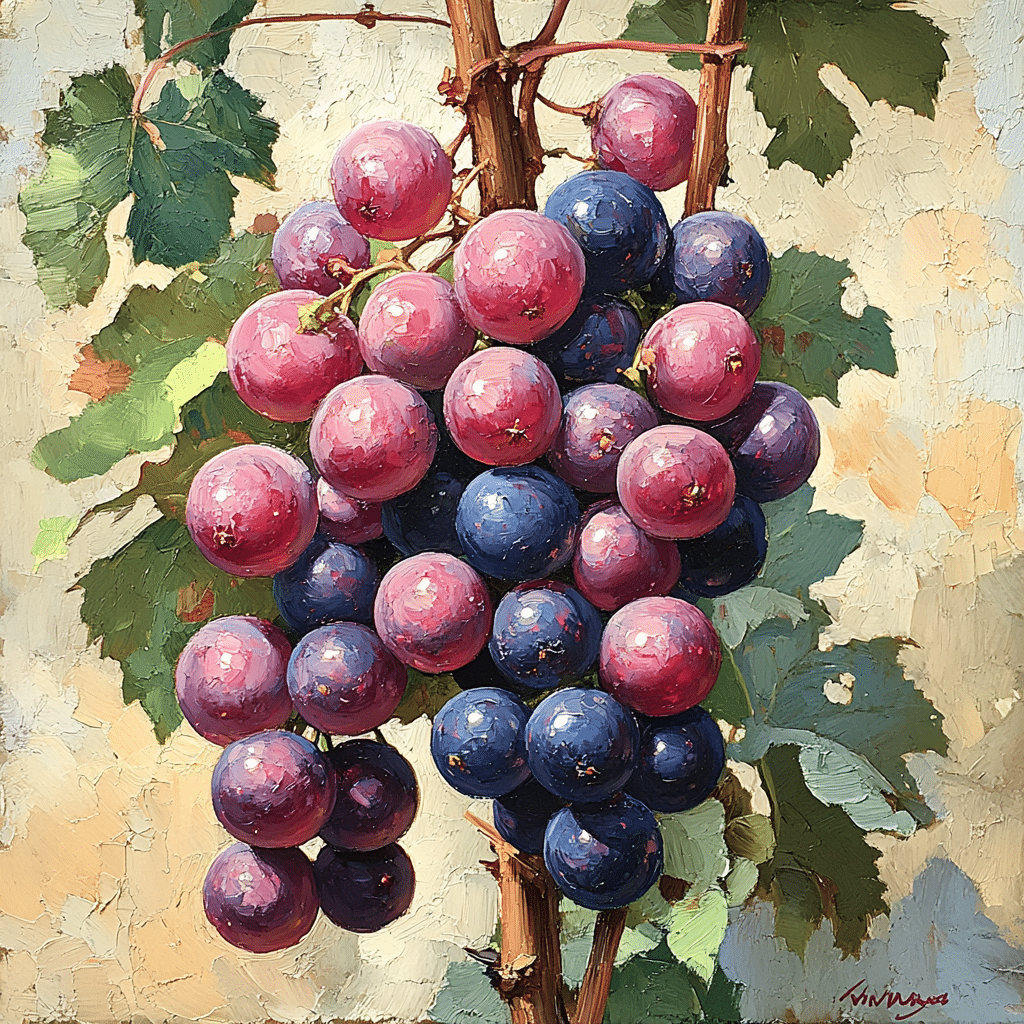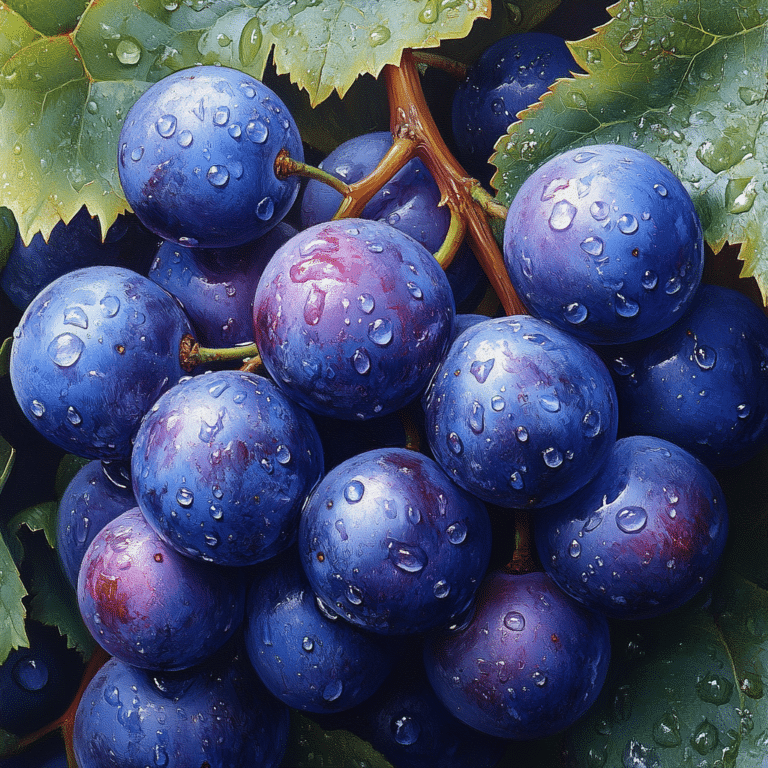Exploring the Allure of Wild Grapes
Wild grapes, with their intense flavors and adaptability, are captivating culinary enthusiasts and naturalists alike. Picture this: traversing the lush landscapes of Baltimore, discovering clumps of these robust, tangy clusters. There’s a growing buzz in the city’s foraging community around these native jewels. But why are wild grapes becoming the talk of the town? Let’s dig into these luscious clusters, exploring their charm and diverse applications.

Wild Grapes vs. Cultivated Grapes: Understanding the Differences
Wild grapes and cultivated grapes have botanical resemblances, but their differences are quite telling. Wild grapes, such as Vitis riparia (Riverbank Grape) and Vitis vulpina (Fox Grape), contrast starkly with common cultivated varieties like Concord or Thompson Seedless.
Taste and Texture
Wild grapes sport a tartness that’s more pronounced than the familiar sugariness of cultivated ones. Think of them as the secret ingredient behind wines and preserves that burst with rich flavor. Their smaller size and thicker skins lend a chewy texture, adding an intriguing twist to any dish.
Nutritional Benefits
Studies from the University of Maryland underscore wild grapes as nutritional powerhouses. They brim with polyphenols and antioxidants, elements known for promoting cardiovascular health, reducing inflammation, and possibly even lowering cancer risks. Who knew such a small berry packs such a punch?

| Aspect | Wild Grapes |
|---|---|
| Scientific Name | Vitis spp. |
| Edibility | Edible (fruits and leaves) |
| Primary Uses | Juicing, jelly making, cooking |
| Storage | Can be juiced immediately or frozen for later use |
| Juice Use | Excellent for making jelly |
| Leaf Characteristics | Ovate leaves, three lobes, jagged edges |
| Growth Habit | Climbing with forked tendrils, forms large thickets |
| Distinct Features | Toothed margins, forked tendrils oppositely from leaves |
| Common Confusion | May be confused with Moonseed (toxic if eaten) |
| Differentiation from Moonseed | Grapes have jagged edges and forked tendrils; Moonseed has heart-shaped leaves with smooth edges and grows around its host |
| Inspect Before Eating | Yes, ensure correct identification to avoid Moonseed |
| Additional Uses | Cooking into dishes, leaves are also edible |
Unique Varieties of Wild Grapes to Forage
The adventure of foraging for wild grapes is as rewarding as it sounds. Here’s a peek at some notable varieties you might encounter:
Vitis riparia (Riverbank Grape)
Often hugging riverbanks and streams, this grape boasts adaptability. Ripening early in the season, its intense flavor is perfect for crafting jellies and pie fillings that wow the palate.
Vitis vulpina (Fox Grape)
These grapes love wooded areas. With larger berries and a sweeter taste, they’re favorites for naturally fermented wines. Their distinctive muskiness adds an exceptional note to beverages.
Vitis aestivalis (Summer Grape)
Ripening from late summer to early fall, Summer Grapes are known for their rich, jammy flavor. They’re the choice pick for robust red wines, flourishing mainly in the open woods and forest edges.

Wild Grape Recipes: From Vine to Table
Bringing wild grapes into your kitchen is both fun and flavorful. Here are a couple of recipes that highlight their unique attributes.
Wild Grape Jelly
Ingredients:
– 4 cups wild grapes (Vitis riparia recommended)
– 3 cups granulated sugar
– 1/4 cup lemon juice
– 1 package fruit pectin
Instructions:
1. Simmer wild grapes and crush to extract juice.
2. Combine grape juice, lemon juice, and sugar in a large pot.
3. Bring to a rolling boil and add pectin.
4. Boil for 1 minute, then pour into sterilized jars and seal.
Wild Grape Wine
Ingredients:
– 15 lbs wild grapes (Vitis vulpina works best)
– 10 lbs sugar
– 5 gallons water
– 1 packet wine yeast
Instructions:
1. Crush grapes and mix with sugar in a fermenter.
2. Add water, stirring until sugar dissolves.
3. Sprinkle wine yeast over the mixture.
4. Ferment for 7-10 days, then transfer to secondary fermentation for about 45 days.
5. Bottle and age for at least six months.

The Environmental Impact of Foraging Wild Grapes
Foraging for wild grapes is a win for the environment. It promotes biodiversity and cuts down on the need for commercial agriculture, often tied to pesticides and herbicides. Sustainable foraging ensures these natural habitats will thrive for generations.
Take the Baltimore Foraging Walks, guided by local naturalist Samantha Bowers. These walks teach ethical foraging practices, such as taking only what you need and leaving enough for wildlife and plant regeneration. It’s a communal effort to keep nature abundant.

Closing Thoughts: Embracing Nature’s Bounty
Wild grapes are more than just a tasty alternative. They invite us to explore flavors, promote health, and connect deeply with nature. Foraging these treasures adds a rewarding layer to our culinary experiences and environmental stewardship. Next time you’re out in the wild, keep an eye out for these versatile gems. Savor their unique benefits and enjoy the journey—because nature’s bounty is meant to be cherished.
Links Incorporation:
There you have it—wild grapes, a little local magic you can savor in more ways than one.
Wild Grapes: Delicious and Versatile Treasures
Origins and Fun Facts
Wild grapes have been part of human diets and ecosystems for centuries. Did you know that these little jewels can be found not just in vineyards, but even in places like White Marsh, where their robust vines thrive in natural habitats? These grapes offer more than just tantalizing flavors; they’re packed with history and versatility. For example, various species of wild grapes are native to North America, and early settlers relied on them for sustenance and medicinal purposes. Wild grapes were even essential in the diet of Native Americans, who mastered using them in various recipes.
Surprising Uses and Characteristics
While talking about how these wild grapes make their way into our kitchens, consider their role in winemaking and health benefits. Fermenting wild grapes can result in intriguing wine flavors not found in commercial varieties. It’s a process that can take anywhere from Weeks To years, depending on the desired complexity and depth. But wild grapes aren’t just for wine-making; they’re also rich in vitamins and antioxidants, which can help combat the aging process and boost overall health.
Growing and Harvesting Insights
Growing wild grapes might seem like a wild idea, but it’s quite feasible. These hardy plants can adapt to various climates and soil types, making them a resilient choice for home gardeners. Imagine boarding a Megabus baltimore To Nyc trip and munching on a handful of homegrown wild grapes. It sounds quirky but entirely possible with a bit of care and patience. When it comes to harvesting, you’ll often find that these grapes ripen in late summer to early fall, signaling the perfect time to gather these delicious fruits for your favorite recipes.
Ecological and Cultural Significance
Interestingly, wild grapes also play a critical role in the ecosystems where they grow, providing food and shelter for wildlife. This natural balance is vital, particularly when considering global environmental challenges like those faced by larger industries, such as the disruption caused by an Iran oil tanker incident. Wild grapes remind us of nature’s resilience and the importance of preserving our natural treasures. Next time you come across wild grapes, whether in a forest or a city park, take a moment to appreciate their understated, yet powerful, contribution to both our culinary and ecological worlds.
By weaving these fun trivia and fascinating facts throughout our exploration of wild grapes, you can better appreciate these little fruits’ richness in flavor and significance. Happy grape picking!

Are wild grapes any good to eat?
Wild grapes make for great juicing and can be frozen if you can’t juice them right away. The juice isn’t just tasty on its own; it also makes fantastic jelly. You can even use them in cooking, and the leaves are edible too.
Do wild grapes have any poisonous look alikes?
Yes, wild grapes have a poisonous look-alike called moonseed. It’s very important to be able to tell the difference because while wild grapes are safe to eat, moonseed is toxic.
How do I identify wild grapes?
You can identify wild grapes by their large, thicket-forming growth that can choke out other vegetation. Look for their ovate leaves with toothed margins, forked tendrils opposite the leaves, and their climbing habit.
How can you tell the difference between moonseed and wild grapes?
To tell the difference between moonseed and wild grapes, look at the leaves and vines. Wild grape leaves have three lobes and jagged edges, while moonseed leaves are heart-shaped with smooth edges. Wild grapes climb with two opposing tendrils, whereas moonseed vines wrap around their host.
When should you pick wild grapes?
The best time to pick wild grapes is when they are fully ripe, usually late summer to early fall, often around September.
Can you drink the water from a wild grape vine?
No, you can’t drink the water from a wild grape vine. It’s not safe and can contain harmful bacteria or toxins.
What are the poisonous berries that look like wild grapes?
Poisonous berries that look like wild grapes include moonseed berries. If you’re ever in doubt, it’s best to avoid eating them until you can be sure.
What animal eats wild grapes?
Many animals enjoy wild grapes, including birds and small mammals that feast on both the fruit and seeds.
Do deer eat wild grapes?
Deer do eat wild grapes. They enjoy both the leaves and the fruit, especially when other food is scarce.
What month do wild grapes ripen?
Wild grapes typically ripen around late summer to early fall, often hitting their peak in September.
Do wild grapes come back every year?
Yes, wild grapes come back every year. They’re a perennial vine that grows back from the same roots each spring.
Is wild grape male or female?
Wild grapes are usually dioecious, meaning there are separate male and female plants. You need both nearby for fruit production.
What if I ate a moonseed?
If you ate a moonseed, you should seek medical attention immediately. Moonseed is toxic and can cause severe health issues.
Are all wild grapes edible?
Not all wild grapes are edible, but most species of wild grapes are safe to eat. However, correct identification is crucial to avoid toxic look-alikes.
What is the fruit that looks like grapes but isn’t?
A fruit that looks like grapes but isn’t could be moonseed or even pokeberries. Always double-check your plant ID before eating wild fruits.



























